Thirteen Faces Pictographs
excerpted from our book
Canyonlands National Park
Favorite Jeep Roads & Hiking Trails
pages 182-184
|
Buy book directly from the author!
Canyonlands National Park
Favorite Jeep Roads & Hiking Trails
- has access info for 75 trailheads
- 56 detailed trail maps
- 241 photographs
- loads of driving and hiking tips
|
regularly $14.95
now on sale for only
$11.95
click here
for book orders
|
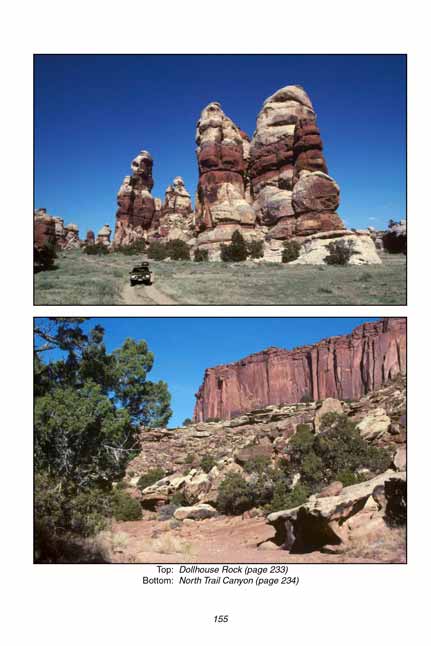
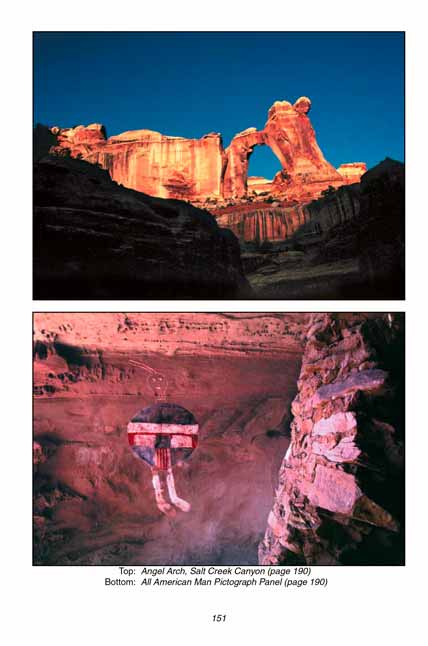
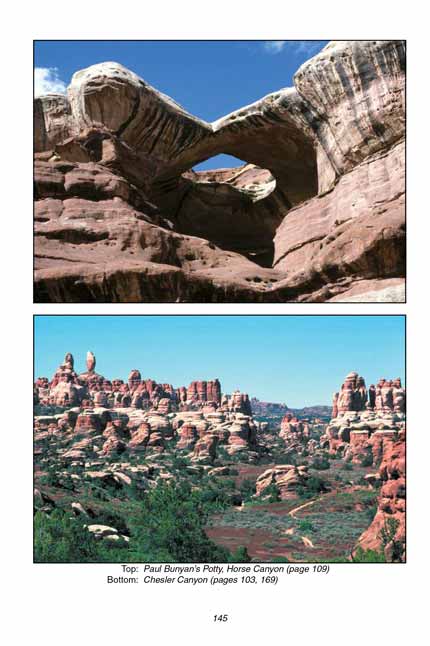
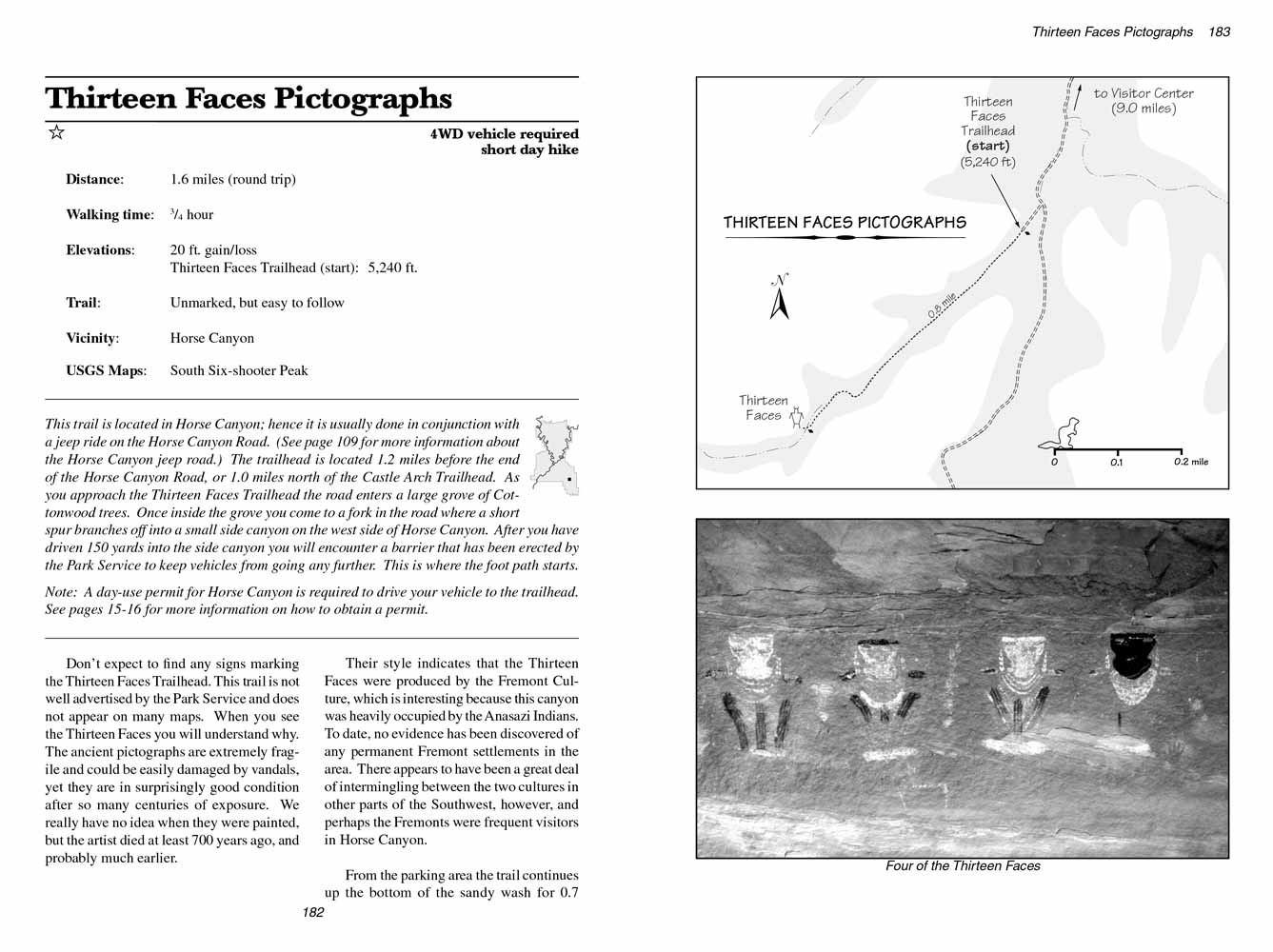 Donít expect to find any signs marking the Thirteen Faces Trailhead. This trail is not well advertised by the Park Service and does not appear on many maps.
When you see the Thirteen Faces you will understand why.
The ancient pictographs are extremely fragile and could be easily damaged by vandals, yet they are in surprisingly good condition after so many centuries of exposure.
We really have no idea when they were painted, but the artist died at least 700 years ago, and probably much earlier.
Donít expect to find any signs marking the Thirteen Faces Trailhead. This trail is not well advertised by the Park Service and does not appear on many maps.
When you see the Thirteen Faces you will understand why.
The ancient pictographs are extremely fragile and could be easily damaged by vandals, yet they are in surprisingly good condition after so many centuries of exposure.
We really have no idea when they were painted, but the artist died at least 700 years ago, and probably much earlier.
Their style indicates that the Thirteen Faces were produced by the Fremont Culture, which is interesting because this canyon was heavily occupied by the Anasazi Indians.
To date, no evidence has been discovered of any permanent Fremont settlements in the area.
There appears to have been a great deal of intermingling between the two cultures in other parts of the Southwest, however, and perhaps the Fremonts were frequent visitors in Horse Canyon.
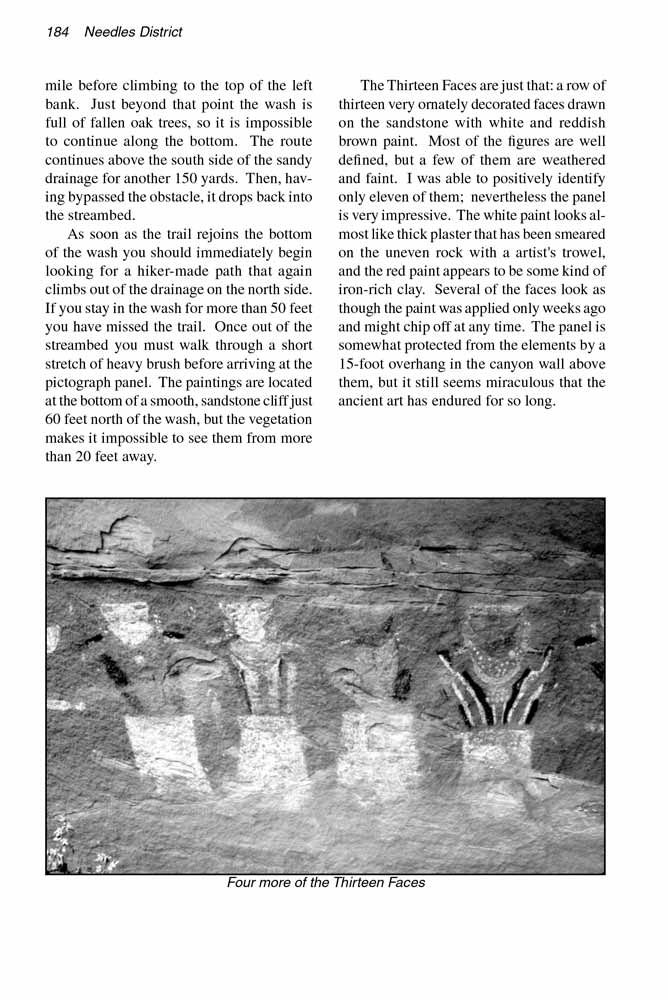 From the parking area, the Thirteen Faces trail continues up the bottom of the sandy wash for 0.7 mile before climbing to the top of the left bank.
Just beyond that point the wash is full of fallen oak trees, so it is impossible to continue along the bottom.
The route continues above the south side of the sandy drainage for another 150 yards. Then, having bypassed the obstacle, it drops back into the streambed.
From the parking area, the Thirteen Faces trail continues up the bottom of the sandy wash for 0.7 mile before climbing to the top of the left bank.
Just beyond that point the wash is full of fallen oak trees, so it is impossible to continue along the bottom.
The route continues above the south side of the sandy drainage for another 150 yards. Then, having bypassed the obstacle, it drops back into the streambed.
As soon as the trail rejoins the bottom of the wash you should immediately begin looking for a hiker-made path that again climbs out of the drainage on the north side.
If you stay in the wash for more than 50 feet you have missed the trail. Once out of the streambed you must walk through a short stretch of heavy brush before arriving at the pictograph panel.
The paintings are located at the bottom of a smooth, sandstone cliff just 60 feet north of the wash, but the vegetation makes it impossible to see them from more than 20 feet away.
The Thirteen Faces are just that: a row of thirteen very ornately decorated faces drawn on the sandstone with white and reddish brown paint.
Most of the figures are well defined, but a few of them are weathered and faint. I was able to positively identify only eleven of them; nevertheless the panel is very impressive.
The white paint looks almost like thick plaster that has been smeared on the uneven rock with an artist's trowel, and the red paint appears to be some kind of iron-rich clay.
Several of the faces look as though the paint was applied only weeks ago and might chip off at any time.
The panel is somewhat protected from the elements by a 15-foot overhang in the canyon wall above them, but it still seems miraculous that the ancient art has endured for so long.
Note to web developers: You may copy this material onto your site, but in return please include a link to my home page
www.utahtrails.com. Thank you, David Day (utahdavidday at gmail.com)
Click here to see more trails in
Canyonlands National Park
© Rincon Publishing Company, all rights reserved
|



 Donít expect to find any signs marking the Thirteen Faces Trailhead. This trail is not well advertised by the Park Service and does not appear on many maps.
When you see the Thirteen Faces you will understand why.
The ancient pictographs are extremely fragile and could be easily damaged by vandals, yet they are in surprisingly good condition after so many centuries of exposure.
We really have no idea when they were painted, but the artist died at least 700 years ago, and probably much earlier.
Donít expect to find any signs marking the Thirteen Faces Trailhead. This trail is not well advertised by the Park Service and does not appear on many maps.
When you see the Thirteen Faces you will understand why.
The ancient pictographs are extremely fragile and could be easily damaged by vandals, yet they are in surprisingly good condition after so many centuries of exposure.
We really have no idea when they were painted, but the artist died at least 700 years ago, and probably much earlier.
 From the parking area, the Thirteen Faces trail continues up the bottom of the sandy wash for 0.7 mile before climbing to the top of the left bank.
Just beyond that point the wash is full of fallen oak trees, so it is impossible to continue along the bottom.
The route continues above the south side of the sandy drainage for another 150 yards. Then, having bypassed the obstacle, it drops back into the streambed.
From the parking area, the Thirteen Faces trail continues up the bottom of the sandy wash for 0.7 mile before climbing to the top of the left bank.
Just beyond that point the wash is full of fallen oak trees, so it is impossible to continue along the bottom.
The route continues above the south side of the sandy drainage for another 150 yards. Then, having bypassed the obstacle, it drops back into the streambed.